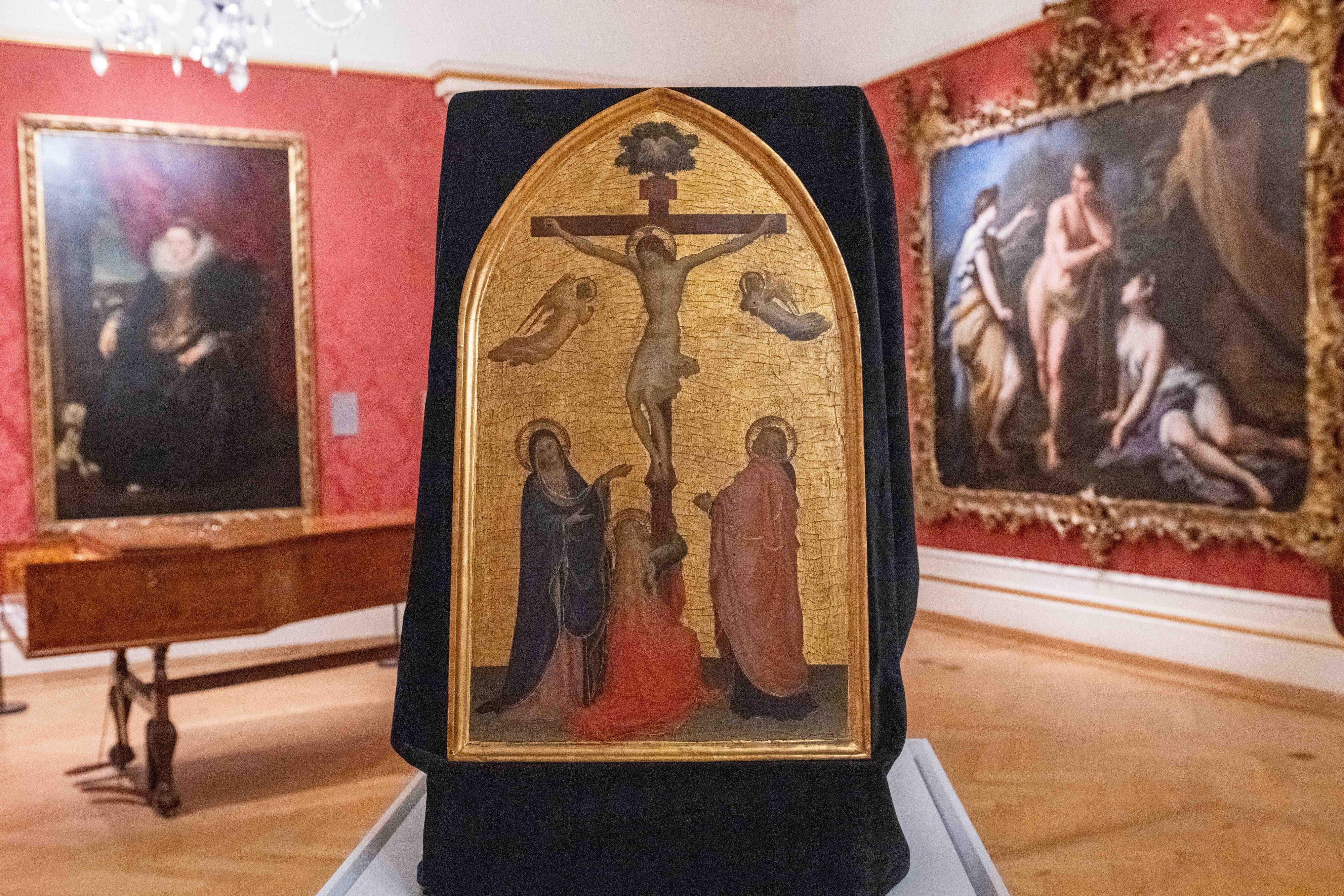Oxford museum saves Renaissance artwork for public after raising nearly £5m
Painted in the 1420s, the crucifixion painting by the Renaissance master Fra Angelico is the earliest surviving panel painting by the artist.

Your support helps us to tell the story
From reproductive rights to climate change to Big Tech, The Independent is on the ground when the story is developing. Whether it's investigating the financials of Elon Musk's pro-Trump PAC or producing our latest documentary, 'The A Word', which shines a light on the American women fighting for reproductive rights, we know how important it is to parse out the facts from the messaging.
At such a critical moment in US history, we need reporters on the ground. Your donation allows us to keep sending journalists to speak to both sides of the story.
The Independent is trusted by Americans across the entire political spectrum. And unlike many other quality news outlets, we choose not to lock Americans out of our reporting and analysis with paywalls. We believe quality journalism should be available to everyone, paid for by those who can afford it.
Your support makes all the difference.Art and culture being accessible to all is “fundamental”, the Ashmolean Museum director has said, after securing nearly £5 million in funding to save a rare Italian Renaissance painting.
A temporary export bar was granted on the crucifixion painting by the Renaissance master Fra Angelico, to allow the Oxford University institute to raise the £4.48 million needed to buy it in a private treaty sale.
Painted in the 1420s, The Crucifixion With the Virgin, Saint John The Evangelist And The Magdalen is the earliest surviving panel painting by the artist.
The Ashmolean director, Dr Xa Sturgis, told the PA news agency it was a “really exciting moment” for the museum to acquire such an “important work” after they secured the funds by the October 29 deadline.
“It’s a very beautiful painting, it’s a very moving painting. I think its quality, I would hope, speaks for itself, but it’s also a very important painting,” he said.
“It’s certainly the earliest surviving crucifixion by Fra Angelico and Fra Angelico was one of the key artists of the Florentine Renaissance and it’s a subject that he painted again and again throughout his career.
“And with this picture, he sets the way in which he approaches the subject and so it’s an exciting picture because it’s a young artist at the beginning of his career.”
The Ashmolean also has another Fra Angelico painting from the end of his career, which will allow visitors to see his development as an artist in a free public display.
He said: “I think access to great art and culture is fundamental and I do think that free entry to museums is something that this country should be really proud of.
“It does mean that, particularly a local audience, can gain a sense of these collections belonging to them, which they do, they are a collection that essentially belongs to the nation and to the public.”
The painting, which has been in a private British collection for more than 200 years and is valued at more than £5 million for the open market, was sold to an overseas buyer and was at risk of leaving the country.
Because of the work’s value and importance, an export bar was granted in January to allow the museum nine months to raise the funds to keep the painting in the UK.
I think access to great art and culture is fundamental and I do think that free entry to museums is something that this country should be really proud of
The piece will be used in the teaching of Oxford undergraduates in subjects including history, history of art and theology, and be included in the collection of artworks which they show to more than 40,000 school children each year.
Dr Sturgis said he feels arts and culture is key to a “full life” and called for museums to receive the support they need to play their role within civic life.
“They give a sense of identity to cities and communities, and they’re community hubs as well,” he add.
Active from 1417 and dying in 1455, Fra Angelico was both a Dominican friar and one of most celebrated artists of the Italian Renaissance.
Best known in Italy now as Beato Angelico or Blessed Angelic One, his paintings are characterised by their psychological penetration, compelling naturalism and distinctive colour palette of blue, pink-red and gold.
Andrew Hochhauser, chairman of the reviewing committee which granted the export bar, said: “The reviewing committee is delighted that the Ashmolean is welcoming this remarkable work into their public collection, ensuring it will inspire and educate people from across the country for generations to come.
“This acquisition represents our commitment to preserving our national treasures and enriching the cultural fabric of our communities.”